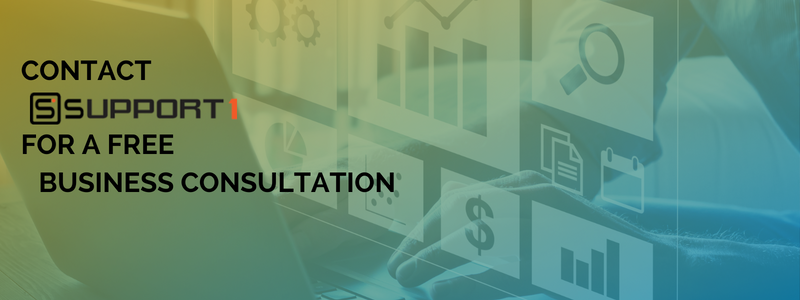SAP Business One Reporting Tools
As small and mid-sized companies grow, there’s more demand for better data visibility to gauge business performance and enhance effective decisions making. Investing in an IT infrastructure that turns large data volumes into meaningful analytics helps business decisions come from an accessible point of view while improving management and streamlining operations. With more companies aiming to set themselves apart from the competition, implementing a powerful analytics and reporting tool such as SAP Business One plays a vital role in driving growth.
SAP Business One provides a digital transforming platform to measure, establish, and analyze information from various sources. It offers an ERP system for business automation that runs across finance, sales, purchasing, inventory, service, and manufacturing. The reporting options are flexible such that you can use standard tools to generate reports or even dig deeper into the data and create custom queries to meet specific needs.

Reporting Options Inside SAP Business One
Reporting makes you provide accessible information to business partners, suppliers, customers, or anyone engaging with your business. It brings them closer and offers a chance for an indispensable partnership rather than an interchangeable transactional relationship.
Here’s a breakdown of reporting within SAP Business One.
SQL Queries
There are situations where you need a custom report, such as a list of customers belonging to a particular group. The use of queries within SAPs is to access databases that are AD-HOCs or read-only types of reports. While you can write these in query generators or wizards and save, both have user-friendly interfaces, but the former is the most common means. With the query generator, there’s no formatting – just raw exportable data to excel. The Query generator lets you see the reports building on the interface as you acquire the query.
The wizard has a step-by-step guide for writing where the system creates SQL background statements even when the user has no SQL syntax knowledge. These tools are to extract data from the database. Therefore, you should only select reports and not use these as a means of updating data back to SAP. While it may be easy to write some simple queries to get data out of the system, you can get a bit advanced and participate in more SAP Business One training for more insight into SQL on the system.
Crystal Reports
Asides from standard reports from queries, you also need tools to customize invoices, sales orders, or customer account statements based on the business needs. SAP Crystal Reports offers a design environment to create custom, advanced-level reports that are profitable for business decisions.
SAP Business One offers one free developer license for Crystal Reports per installation. However, it’s only limited to SAP Business One, and if you intend to write analytical reports on other databases, you’ll need to get an upgrade Crystal license. For the reports to have an accurate display in print, PDF, Excel, and XML formats, it helps if you also have someone with experience using the Report Designer.
Advanced Reporting Offerings
Advanced reporting aims to do one or a combination of more business intelligence and analytics tasks. It ensures a chance to blend data from multiple choices, including adding information to SAP Business one from a source outside the platform. With this done rightly, it offers a powerful way of unlocking insight within a business.

What is Business Intelligence & Analytics
Reporting presents an ideal way to find specific answers to certain queries, such as knowing what’s currently in stock or what the customer is buying, and that might be all you need to know. But that’s not all. Sometimes the next question can be why a product isn’t available, why there’s an excess product in stock, or when a product can be back in stock. These are the questions to which BI & analytics give simpler and faster answers.
In the right way, BI and Analytics don’t just answer questions; it encourages the users to ask them. At times, the user may not be aware of how to proceed. For instance, they look at a stock report, and something looks off – perhaps there’s too much of a particular item than expected, and they wonder where to start assessing the situation.
The occurrence can be from multiple reasons, including a problem with the supply report, frequently slow supply causing you to go out of stock, unpatterned customer orders, and hundreds of other causes. It can seem like a needle in a haystack and become frustrating to implement the usual reporting when you don’t know where to start inspecting.
A well-deployed BI and Analytics solution can provide several answers and ways to simultaneously look at these solutions in one place, making it immensely simple.
The advanced reporting offering is about empowering a data-driven mindset. Data-driven decisions encourage your team to act based on knowledge and rely less on their guts or guesses. You must make it easy by empirically proving their validity to promote this. Proper BI and Analytics solutions make it easier to decide based on facts and reason, allowing you to unleash your insight from a known fact as a starting point.
How BI and Analytics Look
Depending on what you need and where you are in your data-driven journey, BI and analytics can vary in appearance:
Enterprise Reporting:
It’s a large base of reporting with Word, Excel, PowerPoint, PDF, HTML, on-schedule, or on-demand recipients, including customers or business partners.
Guided Analytics:
It’s an on-screen analysis with a broad data pool. Here, the users can control collected and curated information to a drillable, filterable, but contained extent.
Self-Service Analytics:
As attractive as it seems, self-service analytics is often dismissed at sales talks. Since the end users may either be skilled with data or not, this dashboard allows them to build their own answers to questions that the management, IT, or report creation teams may still need to think to ask.

What to Expect From SAP Business One Reporting Tools
Some companies aim to begin their data-driven journey; some are proceeding with concepts like predictive, machine learning, the internet of things, and more. And others are about to take the first step from reporting into BI or analysis. But the answers can be different for each situation. You can require SAP Business One consultation to know the right toolsets.
The various analytics or reporting tools for SAP Business One include:
- SAP Business Object – SAP HANA
- Microsoft Power BI and Cortana Intelligence Suite
- Solver BI 360 Suite
- Phocas BI
SAP Business One, Reporting Tools, and Support One
It’s when the analytics is blended seamlessly into your software and websites for direct access. Embedded analytics is where you can achieve incredible transformations within the business. Several businesses spend so much time and money targeting and chasing the right report, but BI and analytics with Support One do more than improve your business. It’s an opportunity for a newer dimension to ensure productivity from what is almost always a source of frustration for your reporting team.
Contact Support One today to help your business be as successful and efficient as possible, with SAP Business One reporting tools and other key features.










